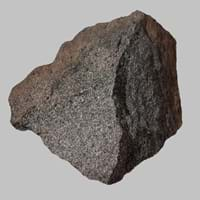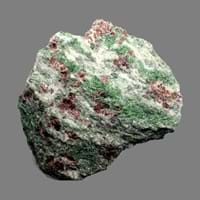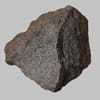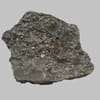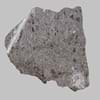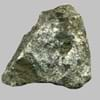Definition
Shoshonite is a basaltic rock, properly a potassic trachyandesite, composed of olivine, augite and plagioclase phenocrysts in a groundmass with calcic plagioclase and sanidine and some dark-colored volcanic glass
Eclogite is an extreme metamorphic rock, formed by regional metamorphism of basalt rock under very high pressure and temperature
Origin
Wyoming,USA
Unknown
Discoverer
Iddings
René Just Haüy
Etymology
From the place of origin called Shoshone riverin Wyoming
From French, Greek eklogē selection with reference to the selective content of the rock + -ite1
Class
Igneous Rocks
Metamorphic Rocks
Sub-Class
Durable Rock, Medium Hardness Rock
Durable Rock, Medium Hardness Rock
Group
Volcanic
Not Applicable
Other Categories
Coarse Grained Rock, Fine Grained Rock, Medium Grained Rock, Opaque Rock
Fine Grained Rock, Opaque Rock
Texture
Porphyritic
Earthy
Color
Brown- Black, Dark Brown
Black, Brown, Colourless, Green, Grey, Pink, White
Durability
Durable
Durable
Scratch Resistant
Yes
Yes
Appearance
Dull
Dull, Banded and Foilated
Interior Uses
Decorative Aggregates, Homes, Interior Decoration
Decorative Aggregates, Interior Decoration
Exterior Uses
As Building Stone, As Facing Stone
Paving Stone, Garden Decoration
Other Architectural Uses
Curbing
Curbing
Construction Industry
As Dimension Stone, Cobblestones, Rail Track Ballast, Roadstone
Not Yet Used
Medical Industry
Not Yet Used
In Chemical and Pharmaceutical Industry, Medicines and Cosmetics
Antiquity Uses
Sculpture
Artifacts
Commercial Uses
Cemetery Markers, Creating Artwork
Creating Artwork, Gemstone
Types
Not Available
Not Available
Features
Has High structural resistance against erosion and climate, Very fine grained rock
Available in Lots of Colors and Patterns, Generally rough to touch, Is one of the oldest rock
Archaeological Significance
Monuments
Not Yet Used
Not Yet Used
Famous Monuments
Not Applicable
Not Applicable
Sculpture
Used
Not Yet Used
Famous Sculptures
Data Not Available
Not Applicable
Figurines
Used
Not Yet Used
Formation
Shoshonite is a fine-grained, hard rock which is a type of metasomatite, essentially altered basalt. It forms with or without crystallization, either below the surface as intrusive rocks or on the surface as extrusive rocks.
Eclogite forms from high-pressure metamorphism of mafic igneous rocks mainly, basalt or gabbro as it plunges into the mantle in a subduction zone.
Mineral Content
Pyroxene
Amphibole, Coesite, Corundum, Dolomite, Garnet, Kyanite, Lawsonite, Paragonite, Phengite, Pyroxene, Quartz, Rutile, Zoisite
Compound Content
Aluminium Oxide, Iron(III) Oxide, Potassium Oxide, Sodium Oxide, Titanium Dioxide
Aluminium Oxide, NaCl, CaO, Carbon Dioxide, Iron(III) Oxide, Magnesium Carbonate, MgO, Sodium Oxide, Potassium, Sodium
Types of Metamorphism
Burial Metamorphism, Cataclastic Metamorphism, Contact Metamorphism
Not Applicable
Types of Weathering
Biological Weathering, Chemical Weathering, Mechanical Weathering
Mechanical Weathering
Types of Erosion
Chemical Erosion, Coastal Erosion, Glacier Erosion
Chemical Erosion, Sea Erosion
Grain Size
Medium to Fine Coarse Grained
Fine Grained
Fracture
Uneven
Not Available
Streak
White to Grey
White
Porosity
Less Porous
Less Porous
Luster
Dull
Subvitreous to Dull
Toughness
1.6
Not Available
Specific Gravity
2.98
2.86-2.87
Transparency
Opaque
Opaque
Density
2.9-3 g/cm3
3.2-3.6 g/cm3
Resistance
Heat Resistant, Pressure Resistant
Heat Resistant
Deposits in Eastern Continents
Asia
India, Russia
India, Kazakhstan, Kuwait, Russia, South Korea, Thailand, Turkey
Africa
South Africa
Ethiopia, Morocco, South Africa
Europe
Iceland
France, Germany, Italy, Norway, Scotland
Others
Not Yet Found
Greenland
Deposits in Western Continents
North America
Canada, USA
Canada, Costa Rica, Panama, USA
South America
Brazil
Argentina, Brazil, Colombia, Ecuador
Deposits in Oceania Continent
Australia
Not Yet Found
Central Australia, New Zealand, Queensland
Shoshonite vs Eclogite Characteristics
Though some rocks look identical, they have certain characteristics which distinguish them from others. Characteristics of rocks include texture, appearance, color, fracture, streak, hardness etc. Shoshonite vs Eclogite characteristics assist us to distinguish and recognize rocks. Also you can check about Properties of Shoshonite and Properties of Eclogite. Learn more about Shoshonite vs Eclogite in the next section. The interior uses of Shoshonite include Decorative aggregates, Homes and Interior decoration whereas the interior uses of Eclogite include Decorative aggregates and Interior decoration. Due to some exceptional properties of Shoshonite and Eclogite, they have various applications in construction industry. The uses of Shoshonite in construction industry include As dimension stone, Cobblestones, Rail track ballast, Roadstone and that of Eclogite include Not yet used.
More about Shoshonite and Eclogite
Here you can know more about Shoshonite and Eclogite. The life cycle of a rock consists of formation of rock, composition of rock and transformation of rock. The composition of Shoshonite and Eclogite consists of mineral content and compound content. The mineral content of Shoshonite includes Pyroxene and mineral content of Eclogite includes Amphibole, Coesite, Corundum, Dolomite, Garnet, Kyanite, Lawsonite, Paragonite, Phengite, Pyroxene, Quartz, Rutile, Zoisite. You can also check out the list of all Igneous Rocks. When we have to compare Shoshonite vs Eclogite, the texture, color and appearance plays an important role in determining the type of rock. Shoshonite is available in brown- black, dark brown colors whereas, Eclogite is available in black, brown, colourless, green, grey, pink, white colors. Appearance of Shoshonite is Dull and that of Eclogite is Dull, Banded and Foilated. Properties of rock is another aspect for Shoshonite vs Eclogite. The hardness of Shoshonite is 6 and that of Eclogite is 3.5-4. The types of Shoshonite are Not Available whereas types of Eclogite are Not Available. Streak of rock is the color of powder produced when it is dragged across an unweathered surface. The streak of Shoshonite is white to grey while that of Eclogite is white. The specific heat capacity of Shoshonite is Not Available and that of Eclogite is Not Available. Depending on the properties like hardness, toughness, specific heat capacity, porosity etc., rocks are resistant to heat, wear, impact, etc.Shoshonite is heat resistant, pressure resistant whereas Eclogite is heat resistant.
